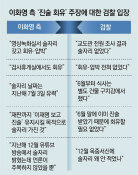The ‘surgery cliff’ era is drawing near
The ‘surgery cliff’ era is drawing near
Posted March. 15, 2019 07:40,
Updated March. 15, 2019 07:40
A 47-year-old blood vessel transplant surgeon, who works at a university hospital in Seoul, has not been able to go home for two days. After spending a whole day on organ transplant surgeries, the professor was just about to grab a bite for dinner when an emergency patient with a blood vessel rupture was rushed in. Spending the whole night patching up the blood vessel and the next day meeting outpatients, the professor has been overworked due to a shortage of surgeons amid growing number of patients who need surgery. As young doctors regard surgeons as tough occupations, the profession is no longer sought-after.
According to a report by the Ministry of Health and Welfare, the number of medical specialists in the department of surgery and thoracic surgery in 2017 stood at 8,299. Among them, 2,416, or 29.1%, are in their fifties, followed by forties (2,231, 26.9%) and above sixties (2,136, 25.7%). Generally it is viewed that surgeons are capable up to the age of 60 to perform surgery for several hours. This means that there are currently about 6,000 surgeons that can perform surgeries. However, 2,400 surgeons are expected to retire in 2027, followed by an additional 4,600 in 2037.
Unfortunately, younger generation surgeons to fill their place are rapidly decreasing. Assuming that the trend of surgeons acquiring specialist license in surgery and thoracic surgery between 2014 and 2018 continue, there will be some 1,500 and 3,200 new surgeons joining the workforce in 2027 and 2037, respectively, which is about 1,000 less than the number of retiring surgeons. The future of a “surgery cliff” is becoming a nearing reality.
Gun-Hee Cho becom@donga.com







